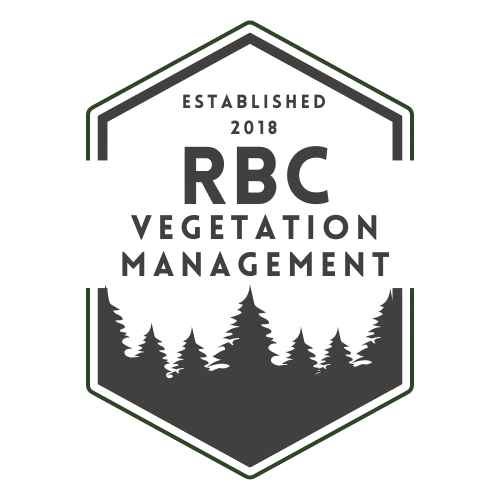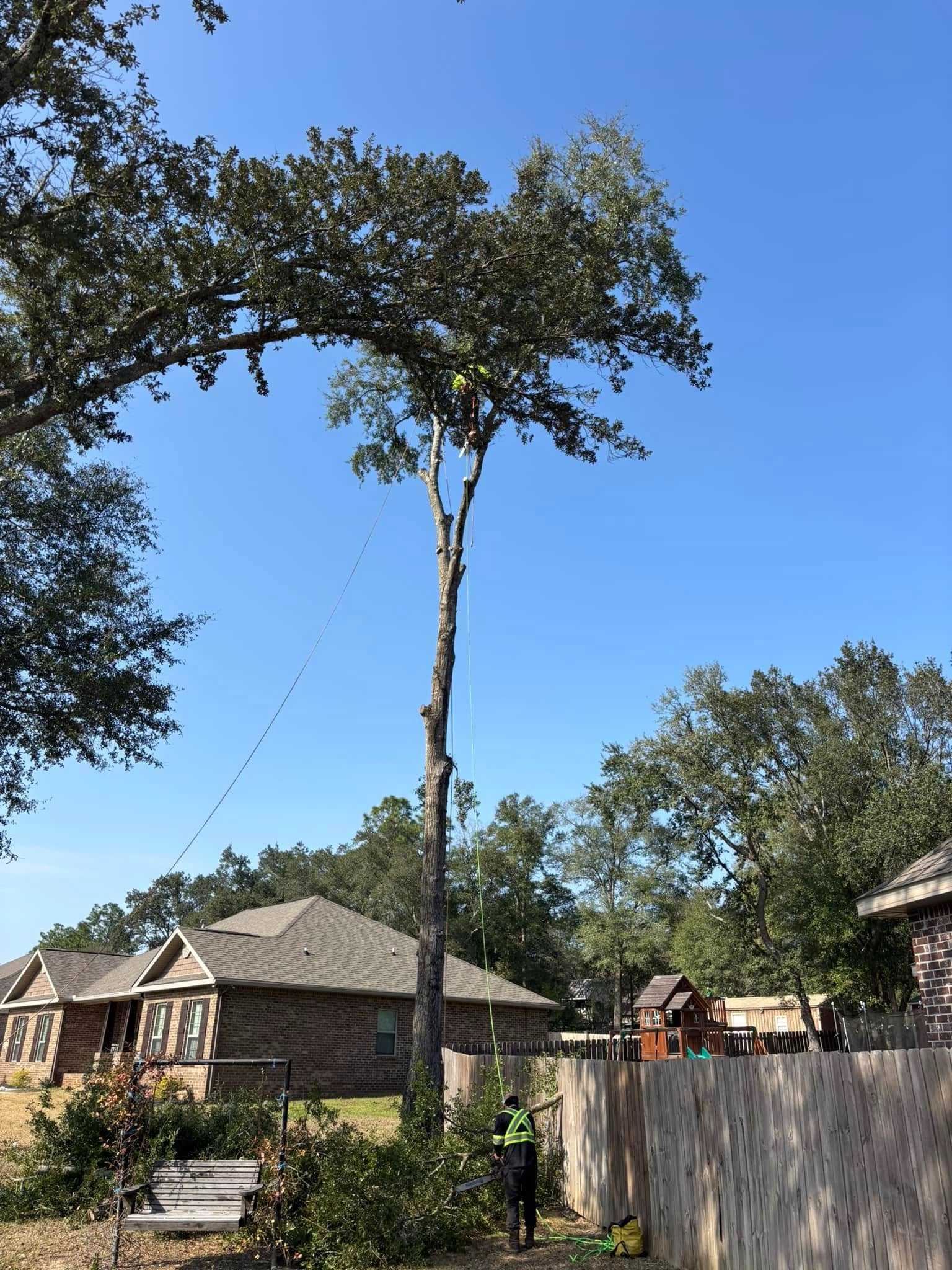Alabama is full of beautiful trees that give Saraland yards character. Magnolias, dogwoods, cypress, and many others thrive here, bringing properties to life. However, if you want these trees to last, you’ll need to catch the problems that weaken them early.
Heavy rain loosens the soil, strong winds snap limbs, and summer heat dries out the roots. Spotting underlying issues early gives your tree a chance. You’ll also want to call for professional tree services like RBC Vegetation Management before the tree becomes a serious hazard, so move quickly when you notice the five signs below.
Here’s more about when to remove a tree on your Saraland property.
How Saraland’s Conditions Put Stress on Trees
Trees deal with more than just age or disease. Local weather patterns, soil conditions, and urban development all play a role in how quickly a tree declines. Common tree stressors in Saraland include:
- Poor drainage that suffocates roots and causes decay
- Erosion on sloped yards that exposes root systems
- Drought that dries out limbs and reduces sap flow
Below are some guidelines for when to schedule tree services with RBC Vegetation Management in Saraland.
The Tree Looks Dead or Shows No Growth
Dead trees lose leaves and buds, snap easily, and shed bark. If there’s internal decay, you might see a hollow trunk, fungus at the base, or deep cracks. If over half the canopy is bare, your tree may also have lost its internal support and could fail without warning.
A certified arborist can perform tree health assessments to check your tree’s condition. If the structure or roots are unstable, it’s important to schedule removal as soon as possible.
Roots Are Lifting Concrete or Damaging Structures
Heaved concrete, lifted pavers, and cracked foundations often point to root intrusion. Tree roots expand in their search for water, pushing themselves into sidewalks, patios, and pipes. Raised soil or gaps around the base of the tree often mean the root plate is shifting.
Is the tree young and healthy? A simple root barrier installation may prevent further damage. However, if you already see displacement near your house, or the tree is too close and will continue to cause damage, tree removal is the direct solution.
The Tree Leans or Sways Too Much
Leaning trees with cracked soil and exposed roots often signal root failure. If the lean increases after storms or the trunk starts pulling away from the ground, the tree has already lost vital stability. These are clear signs that its base is giving out, which means your tree could fall during the next storm.
Arborists sometimes stabilize trees with cabling and bracing while the roots remain intact. However, once the base starts to shift or the soil around it slumps, no reinforcement will hold. It’s better to let professional tree services remove it safely and prevent damage to nearby infrastructure.
Large Limbs Are Dead or Overhanging Structures
Dead limbs over homes or driveways count as high risk. They break under wind, gravity, or internal decay, so look for cracked junctions, peeling bark, or branches that no longer form buds. Large V-shaped splits or limbs crossing under tension are also weaknesses.
Pruning thins out these canopies and reduces stress. Tree trimming can also remove some dangerous limbs without destabilizing the tree.
Is over half the canopy dead? Trimming won’t fix the structure, so schedule a full removal.
You Keep Getting Complaints or Legal Notices
Complaints from neighbors may start when your tree drops limbs, grows into power lines, or leans over property lines. You’re responsible for damage if the tree crosses a boundary or interferes with utilities.
If you’re unsure, consider enlisting a professional’s help. Tree inspections provide documentation and confirm whether anything poses a safety risk. Removal might be a good way to avoid fines or liability if complaints are already on file.
Need a Tree Removed? Call RBC Vegetation Management Today
If your tree shows any of the signs listed above, don’t wait for it to fall, as things get expensive quickly. If you’re local, contact RBC Vegetation Management for expert tree services in Saraland. The team can inspect, assess, and safely remove trees before they become a liability.
Whether it’s root damage, decay, or another risk, we’ll remove your tree safely and protect your property from further damage. Contact RBC Vegetation Management today!
Frequently Asked Questions
Here’s what you need to know about removing trees at the right time.
When Should a Tree Be Removed?
You’ll want to remove a tree if you see dead limbs, hollow trunks, root damage, or bad leaning.
Will Insurance Pay for Tree Removal?
Typically, insurance covers tree services to mitigate damage or restore access. Poor health or maintenance aren’t eligible expenses.
What Happens If You Don’t Remove a Dead Tree?
If your tree keeps getting weaker or dropping limbs, it risks falling and damaging property or people. Prompt removal is best.



